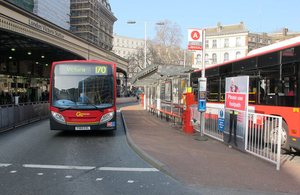Next stop for UK public transport – electric bus fleets

Siemens: Improved air quality and reduced vehicle emissions countered by charging, energy demands and financing challenges
2,220 electric buses are in use across Europe. London’s electric bus fleet of over 200 electric buses is the largest in Europe. Transport for London plans to add a further 78 electric double-deck buses as part of its ambition to have all electric buses in the city by 2037**. The effect of electrification will reduce bus NOx emissions by an average of 90% in the capital by October 2020.
“The challenges facing the capital, UK and Europe to develop sustainable clean transport is hampered by the need to deploy new technologies and solutions that integrate with existing infrastructures, which is creating difficulties associated with charging practicalities, grid demands and financial challenges,” said Bernard Magee, sales director Future Grid Siemens.
Commenting on the aspirations for sustainable clean transport in the UK, Darren Shirley, Chief Executive of Campaign for Better Transport, said: “There is a pressing need to accelerate the move away from diesel to zero-emission buses, in order to meet carbon emissions and air pollution targets. The Government should put in place deadlines for all new buses to be electric or hydrogen-powered by 2025, and all buses on the road to be zero-emission by 2035. This means we need to rapidly deploy zero emission technology and tackle any barriers to uptake. This can be supported through the Government introducing a ‘fleet and depot transition fund’ to get infrastructure in place, and a ‘bus manufacturing fund’ to help the UK bus industry scale up to build more zero-emission buses. With this support in place, all bus operators can and must make cleaning up their fleets a priority***.”
Slow or overnight charging at UK depots is the predominant form used to replenish e-buses at the moment. Moving forward particularly in cities with long routes fast-charging high-power choices such as pantographs, retractable apparatus mounted more commonly at some point along the bus route will present a form of opportunity charging for e-bus vehicles. At present pantograph charging is more commonplace in mainland Europe and north America. Pantographs are particularly useful for ‘flash’ charging on bus routes where the ebus is stationary for a limited amount of time. This also has the effect of shifting some of the power demand for charging away from the depot. For the expected rapid increase in bus electrification it will take a mix of charging solutions for different scenarios to meet all kinds of demands.
With electric buses requiring large amounts of electrical energy bus operators are becoming critical power users and doubts have been expressed over the grid’s ability to meet the full electrification demands for public transport. Supplying an electric fleet of buses with energy creates significant pressures on the grid, particularly during periods of high demand. However, there are solutions and smart charging management software can shift charging loads to specific times, limiting stresses on the grid. Energy storage systems can also draw power from the grid for later use or if the grid became inaccessible off-grid green energy supplies can be employed. “Rising to this type of combined transport and power challenge requires extensive power grid & transport capabilities. Providing e-bus operators with a fully managed grid to vehicle charging service demonstrates both resilience and confidence which is critical”, Magee said.
The demand for electric buses has also seen a surge in innovative financial collaborations between energy companies, operators, manufacturers, and cities and municipalities to help minimise risks and spread costs along the supply chain. Today Siemens is working with public and private fleet managers to build depots, capable of delivering megawatts of electricity, that are both scalable and can be financed with no upfront capital outlay – with the savings made from using less energy repaying the investment.




